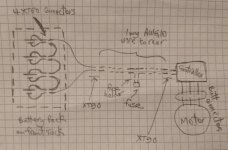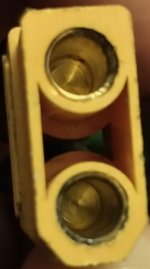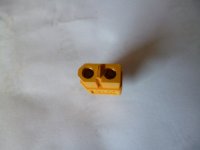Vincenzo
1 W
- Joined
- Jun 12, 2022
- Messages
- 61
I have 2 xt90 connectors, 4 xt60 connectors and a blade fuse holder (and the fuse) between the battery and the controller, and there are three bullet connectors taken from EC90 male-female wires between the controller and motor. It took me a long time of observation to start thinking that all those connectors need some kind of contact cleaning (or vineger and baking soda, or something to remove the rust) or the bicycle starts loosing power (especially up hills) and sometimes at starting from stand still, there is a kickback for too much current causes lots of voltage drops in those connectors.
Searched in all forums and did not find anything relevant, does my thinking make sense? Did anyone have this issue? and is there a thread somewhere that I missed about regular cleaning?
Below is a primitive hand drawing that explains why I have all those connectors. Basically, ease of disassembly, diagnosis and repair.
Searched in all forums and did not find anything relevant, does my thinking make sense? Did anyone have this issue? and is there a thread somewhere that I missed about regular cleaning?
Below is a primitive hand drawing that explains why I have all those connectors. Basically, ease of disassembly, diagnosis and repair.
Attachments
Last edited:




